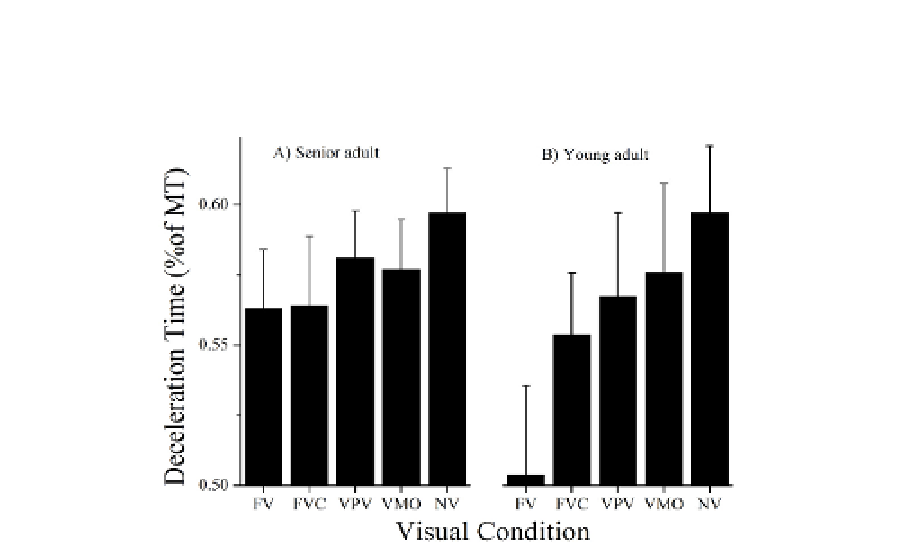Environmental Engineering Reference
In-Depth Information
consistent with previous work on age and motor control showing that for faster movements,
older adults rely on modes of control that are minimally dependent on sensory feedback
(Chaput & Proteau, 1996). These results can be interpreted as a manifestation of slowed
central processing of sensory information.
Fig. 5. Time spent in deceleration as a percentage of total movement time. A) Senior adult,
F
4,44
=1.84, p=0.15 and B) Young adult , F
4,44
=13.70, p<0.01.
Results - Grasp component:
To quantify formation of the grasp component we analyzed peak
grasp apertures. Grasp aperture gives an indication of the precision requirements of a task,
with larger apertures considered a compensatory strategy present in more demanding tasks
with higher levels of uncertainty. In young adults apertures were significantly smaller in the
FV, FVC, and VPV when compared to the condition where no visual feedback of the hand
was provided (NV). This replicates the results found for movement time and indicates that
young adults were able to use some limited visual feedback to reduce uncertainty in
planning their grasp. In contrast, older adults used a markedly larger grasp aperture than
the rest of the cohorts, and showed a minimal condition effect. Middle age adults did show
an effect on grasp measures when provided with crude visual feedback of the hand
throughout the movement (FVC). This condition resulted in apertures that were
significantly smaller than in the no feedback condition (NV). No other condition resulted in
smaller apertures than NV (Figure 5). Therefore, it appears that for middle age adults, the
condition with crude feedback available throughout the movement simplified the
sensorimotor requirements even more than when participants were provided with natural
viewing conditions (FV).
Further inspection of the grasp aperture results shows that, although not statistically
significant, the FVC condition resulted in the smallest average grasp apertures for all four
age groups. These results provide preliminary evidence that luminance contrast may be an
important variable for reducing movement complexity when grasping objects in a virtual
environment. In our experiment, due to room lighting, the luminance contrast between the
real limb and the background was low in the FV condition. Therefore, aperture planning in
this condition may have been more difficult than in the FVC condition where the graphical

